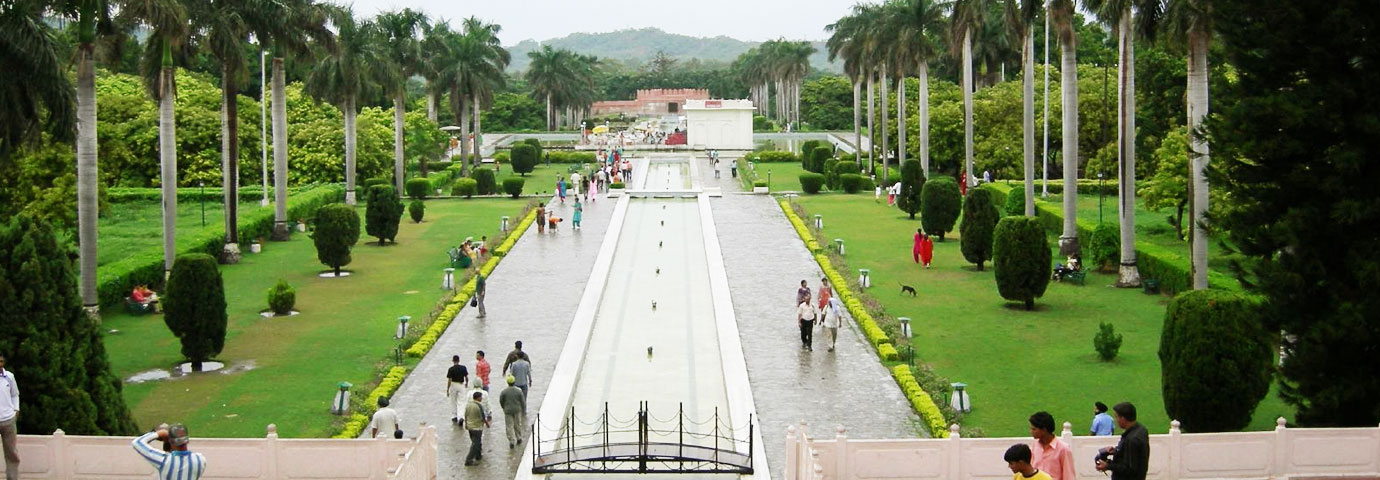Throughout the changing seasons, gay butterflies in swarms fuss faithfully around blazing masses of flowers. Cool, shady walks and flagged pathways run to the outer reaches of the far-flung creeper-festooned walls. Gray-fringed palm trees, shapely cypresses, and dense groves of trees add a touch of mystery to the Yadavindra Gardens of Pinjore. A watercourse traipsing from level to level sparkles in the sunlight, its pools reflecting white shining pavilions and balconies etched high against a blue sky.
The graceful arched balconies and tinkling fountains, luxuriant green lawns and murmuring watercourse, limpid pools, shady walks and colorful flowerbeds, unusual descending terraces and monumental gateways-all were carefully planned to create a special effect.
Lovers stroll hand in hand, the elderly snooze under the trees, families open their hampers after making themselves comfortable on the grassy carpet, and children run towards the mini-zoo. In the evening, a cool soft breeze comes down from the Himalayas and wanders through the great gardens.
Unlike other Mughal gardens, the seven terraces at Pinjore, instead of ascending, descend into the distance and achieve an almost magical effect. In the near distance, the purple-green Himalayas seem to rise up sheer over the battlements of the old garden walls and the white buildings of the little hill station of Kasauli glow in the setting sun.
From the stately Sheesh Mahal built in the Rajasthani-Mughal style, the watercourse with its never-ending bubbling music cascades from terrace to terrace, flowing under the towering Rang Mahal, and then playing around the Jal Mahal. As dusk merges and blends into night, the fountains and splashing waterfalls, re-illuminated by tasteful color schemes, and in the clear reflecting pools, the moonlight plays with mysterious shadows. Fireflies waltzing through the crisp night air form the prettiest of decorations.


